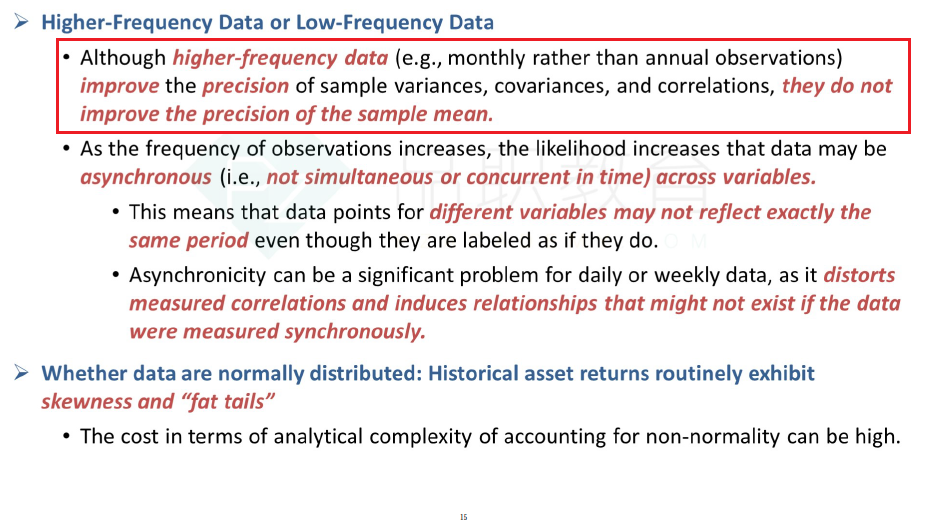NO.PZ202206070100000102
问题如下:
With respect to his answer to Brown’s question, O’Reilly is most likely:
选项:
A.correct.
B.incorrect with respect to asynchronism.
C.incorrect with respect to variances and correlations.
解释:
Solution
A is correct. O’Reilly’s answer is entirely correct as stated.
B is incorrect. O’Reilly’s answer is entirely correct as stated. High-frequency data are more sensitive to asynchronism.
C is incorrect. O’Reilly’s answer is entirely correct as stated. High-frequency data produce more precise variances and co-variances (and less precise means).
A是正确的。O’Reilly的回答完全正确。
B是错误的。高频数据对异步更加敏感,即高频数据更容易产生异步性的问题。比如用每天的数据观测美国和欧洲股票市场,因为两地存有时差,所以就会出现异步性。但如果是用月度数据观测,这种时差就可以忽略不计。
C是错误的。高频数据产生了更大容量的样本数据,所以能估计出更精确的方差和协方差。但是对于均值而言,只要用的历史数据,估计的数值就太精确。这也是根据实务观测到的结果。
1是,原版书哪里提到这个
2是,方差和协方差的计算都要用到均值,方差和协方差会更精确,均值却less 精确了,不太能理解。有没有理论逻辑上的解释,为什么高频反而会得出不精确的均值






